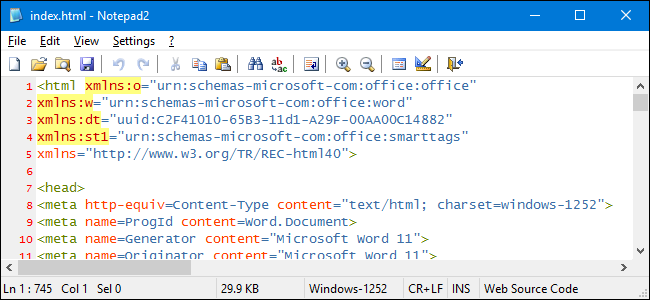
Notepad is a Windows staple that hasn’t really changed in years. It’s fine as a basic text editor, but if you’d like to replace it with something a bit more powerful, then read on.
Text editors are great. They’re fast and easy to use for simple things like taking fast notes, keeping a dated log or journal file, or editing the odd configuration or even HTML file. Programmers and developers use them as one of their basic editing tools.
Notepad has been the standard text editor included with Windows for many years. The problem is, as text editors go, Notepad is really basic. There are plenty of alternatives out there that add things like tabs, highlighted syntax, autocompletion, bookmarks, and customizable interfaces. And most of them are just as fast and easy to use as Notepad.Sure, you could always just install one and use it like any other app, but we’re going to show you how actually replace Notepad so that your preferred text editor becomes the default tool when you—or any app—opens text files or calls on Notepad from anywhere in the Windows interface.
Step One: Choose a Replacement Text Editor
There are a ton of great Notepad replacements out there. Notepad2 and Metapad are both freeware favorites that work with the technique we’re describing in this article. If you use an editor professionally for development and don’t mind paying for extra features, you might also want to check out Sublime Text ($70) and UltraEdit ($99.95). The best editor for you will depend on what you need a text editor to do, so we encourage you to try them out and see what strikes your fancy before settling on a replacement. Once you do settle on a replacement, you’re ready to move on with the rest of these instructions.

Step Two: Make Sure the New Text Editor Will Work as a Replacement
The technique we’re using in this article is to actually replace the “notepad.exe” file in the Windows system folders with a copy of the EXE file for our chosen replacement editor. For this reason, the text editor replacement you choose will only work if its executable file can run outside its own folder. This usually isn’t the case with apps you have to install, so it’s best to look for an app that you can download as a self-contained ZIP package instead. Portable apps are ideal candidates.
We’ve already tested both Metapad and Notepad2, and both will work. If you’re using a different app, it’s easy enough to test whether it will work. Start by downloading the app you want to test and installing it if it’s an installable app. Next, you’ll need to find the app’s folder. If it’s a portable app, that’s just the folder you extracted. If it’s an installed app, you’ll find it in either your “Program Files” or “Program Files (x86)” folders.

When you’ve found the app’s folder, you should see just one file inside with an EXE extension.

Copy that executable file by selecting it and pressing Ctrl+C on your keyboard. Go to your desktop and paste the file there by hitting Ctrl+V. The idea here is to get the executable file somewhere all by itself, without the other stuff in its folder. Now, double-click that copied file and see if the text editor can run. If it does, you’re good to go. If it doesn’t, then it won’t work with the techniques in this article.
NOTE: You may have noticed that one of the long-standing favorite text editors—Notepad++—isn’t on our list. While it used to work with the techniques we’re discussing in this article, it’s…
The post How To Replace Notepad with Another Text Editor in Windows appeared first on FeedBox.